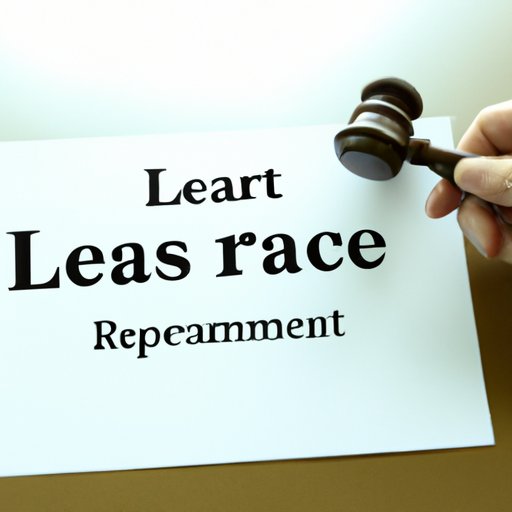Introduction
A copier lease is an agreement between a business and a leasing company that allows the business to use a copier or other office equipment in exchange for regular payments over a designated period of time. This type of agreement can be beneficial for businesses that are not able to purchase the equipment outright due to financial constraints. However, there may come a time when a business needs to get out of their copier lease. There are several options available to do this, including negotiating with the leasing company, transferring the lease to another party, returning the copier, renegotiating the terms, finding a new lessor, and utilizing a lease trade-in program.
Negotiate with the Leasing Company for a Buy-Out Option
One way to get out of a copier lease is to negotiate with the leasing company for a buy-out option. This means that the business will pay off the remaining balance of the lease in one lump sum payment and then own the copier. The benefits of this option include avoiding future payments, owning the copier outright, and potentially being able to resell it for a profit. However, there may be challenges associated with this option, such as the cost of the lump sum payment and the fact that the leasing company may not be willing to negotiate. If this is the case, the business may need to consider other options.

Transfer the Lease to Another Party
Another way to get out of a copier lease is to transfer it to another party. This involves identifying potential parties, such as another business or an individual, who is interested in taking over the lease. Once a party has been identified, the business will need to contact the leasing company to initiate the transfer and provide the necessary paperwork. It is important to note that the leasing company may require additional information from the party taking over the lease before they agree to the transfer.
Return the Copier to the Leasing Company
If the business no longer needs the copier, they may choose to return it to the leasing company. This option is typically best for businesses that are unable to find another party to take over the lease or if the cost of the buy-out option is too high. When returning the copier, the business may be responsible for any remaining payments on the lease and may also have to pay a termination fee. It is important to contact the leasing company to discuss the process and any fees prior to returning the copier.

Renegotiate the Terms of the Lease
If the business would like to keep the copier but wants to make changes to the terms of the lease, they may be able to renegotiate the terms with the leasing company. Possible terms to negotiate include the length of the lease, the payment amount, and any additional fees. It is important to consider the business’s budget and the costs associated with the new terms before agreeing to them. Additionally, the leasing company may require additional paperwork before finalizing the renegotiation.
Find a New Lessor
If the business is unable to reach an agreement with the current lessor, they may want to consider finding a new lessor. This involves researching potential lessors and comparing their terms to determine which one is the best fit for the business. When selecting a new lessor, it is important to ask questions about the terms of the lease, the length of the lease, any additional fees, and what happens if the business defaults on the lease. Additionally, the business should ensure that the new lessor is reputable and has a good track record.
Utilize a Lease Trade-In Program
Finally, the business may want to consider utilizing a lease trade-in program. This type of program allows the business to trade in their existing copier lease for a new one with more favorable terms. The benefits of this option include saving money on future payments and having the ability to upgrade to a newer model of copier. The process of trading in a lease typically involves contacting the leasing company to initiate the process, providing the necessary paperwork, and paying any applicable fees.
Conclusion
Getting out of a copier lease can be a challenging process, but it is possible. By understanding the different options available, such as negotiating with the leasing company, transferring the lease, returning the copier, renegotiating the terms, finding a new lessor, and utilizing a lease trade-in program, businesses can make the process smoother. Ultimately, the best option for getting out of a copier lease depends on the business’s budget, needs, and goals.
Additional resources on getting out of a copier lease can be found on the Small Business Administration website, as well as through the National Association of Equipment Leasing Brokers.
(Note: Is this article not meeting your expectations? Do you have knowledge or insights to share? Unlock new opportunities and expand your reach by joining our authors team. Click Registration to join us and share your expertise with our readers.)

The only way to get out of the lease early is to ask the leasing company if they will assign the lease to another party (business)